As we were leaving the Merced National Wildlife Refuge, we spent at least fifteen minutes watching three Northern Harriers demonstrate how they got their name. Usually Harriers will move on once they spot you, but these three must have been hunting something special because one by one they buzzed the same brushy area, totally ignoring us.
Despite their appearance these are not shots of the same bird, but I chose to put them in this order because they all seemed to be harrying above the same shrubs. The first shot is a classic ID shot, with that distinctive Northern Harrier head.
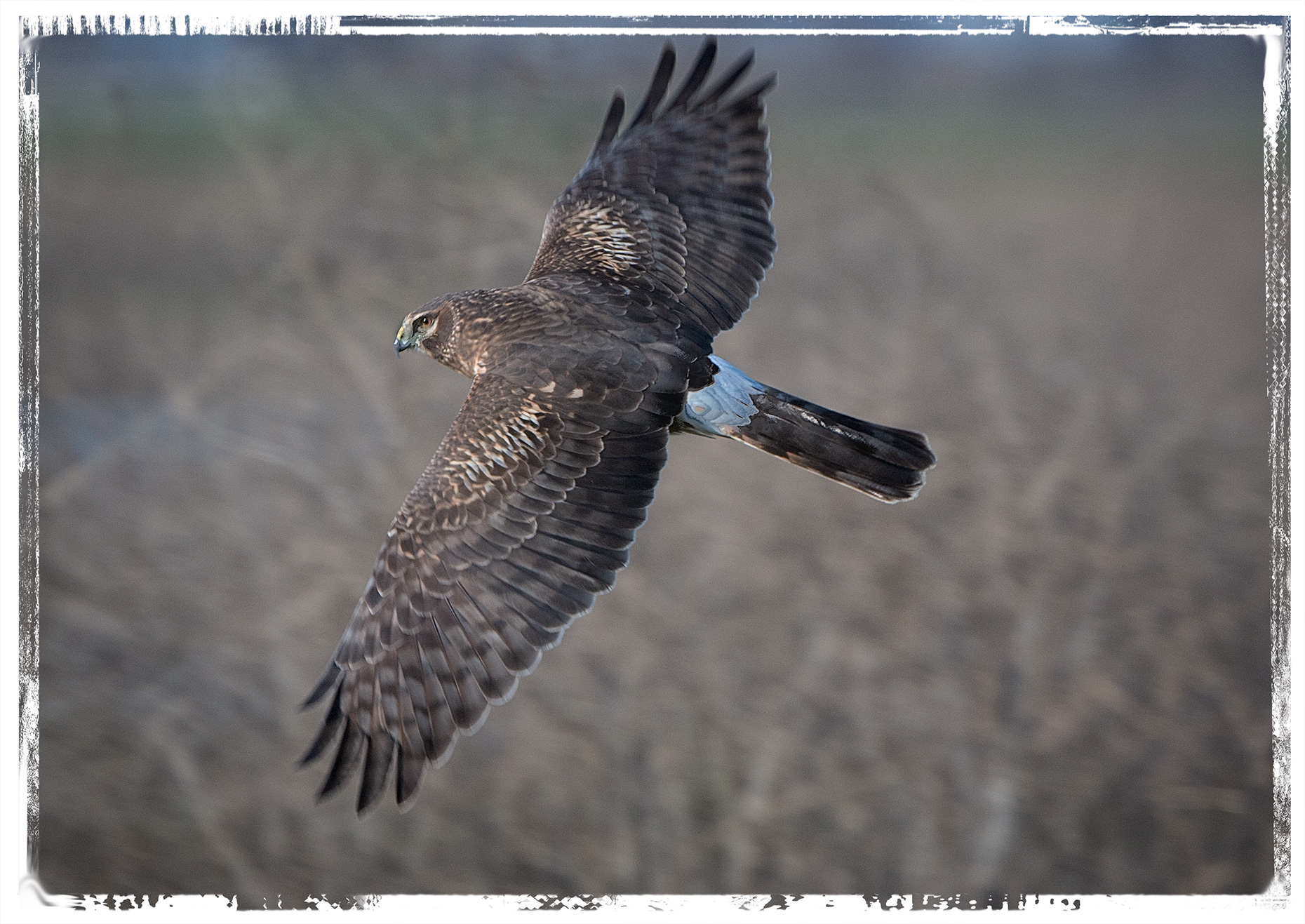
Here the Harrier seemed more intent on scaring something into running than actually catching something.
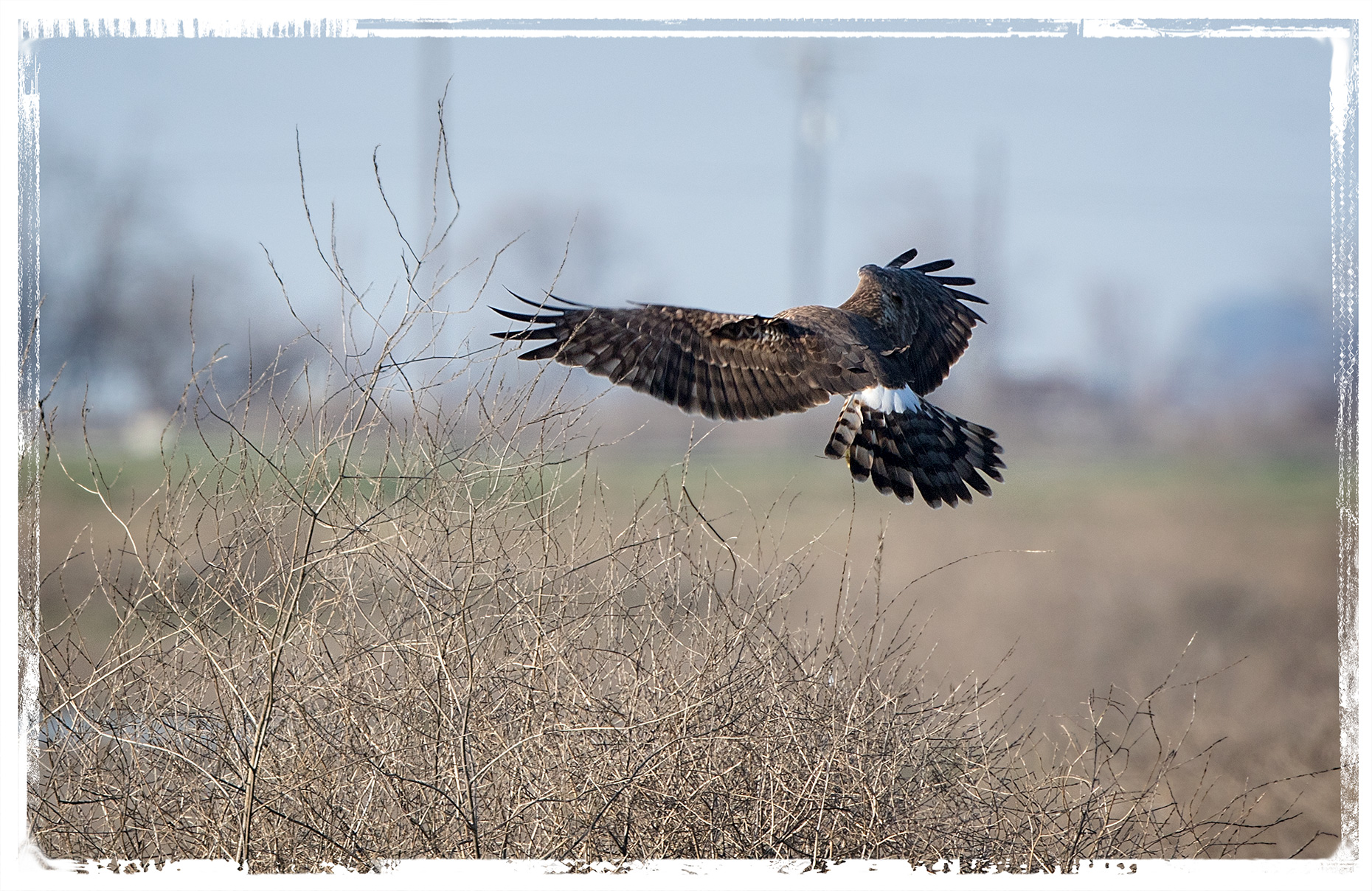
After a few minutes of hovering, this Harrier moved on,
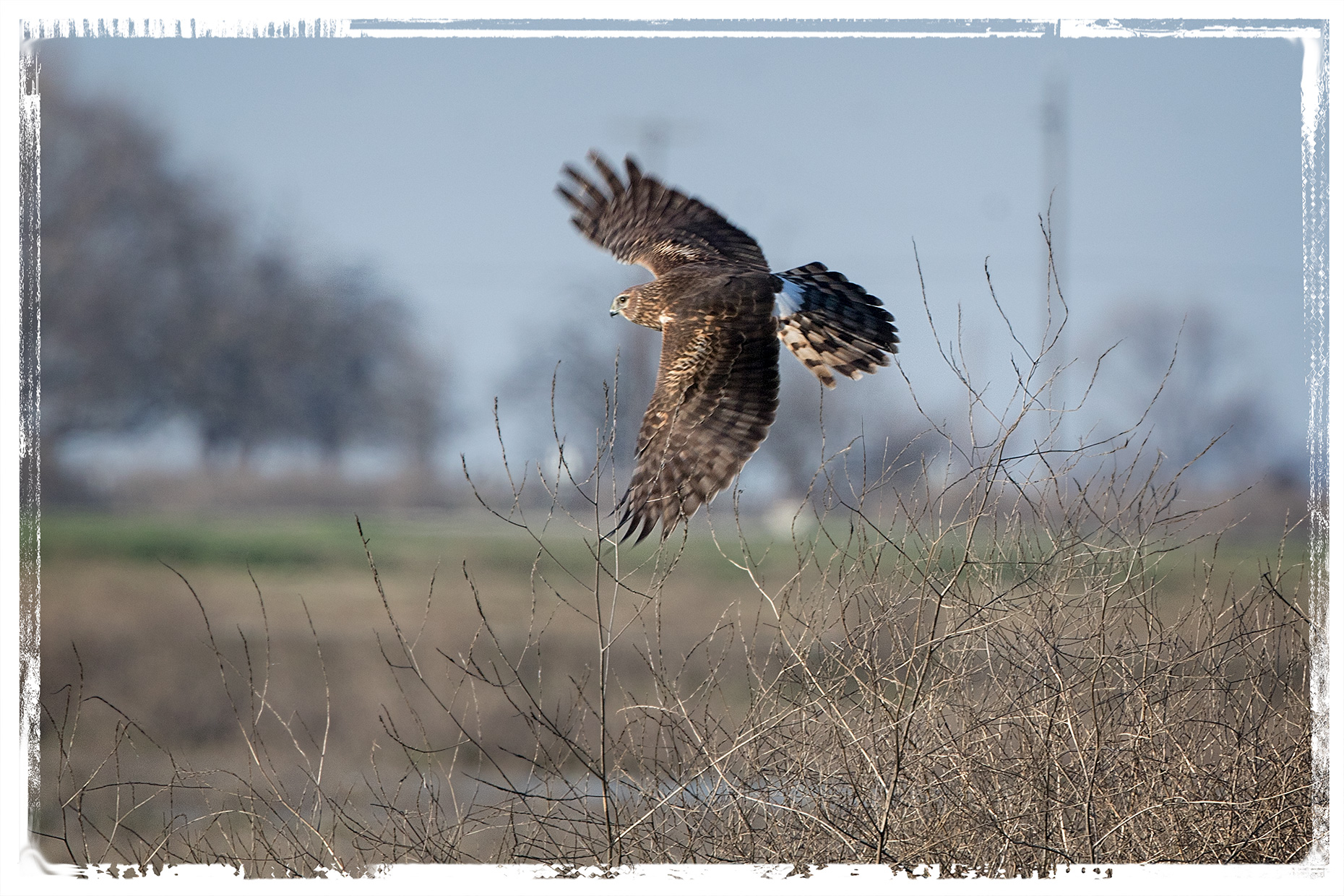
but was closely followed by another Harrier that seemed to have spotted prey in the same bushes.
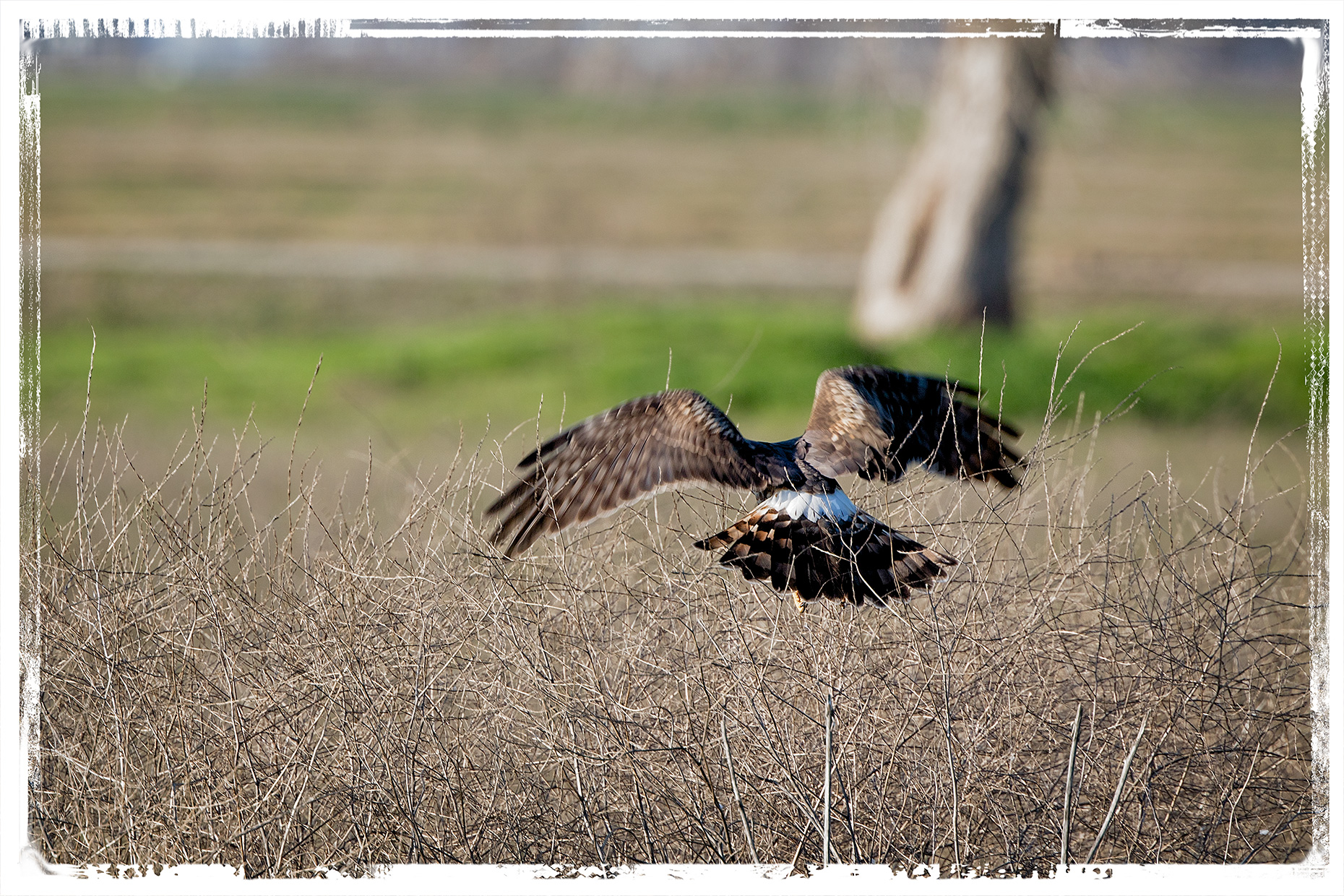
Once a Harrier dove into the bushes my camera had a very hard time deciding what to focus on.
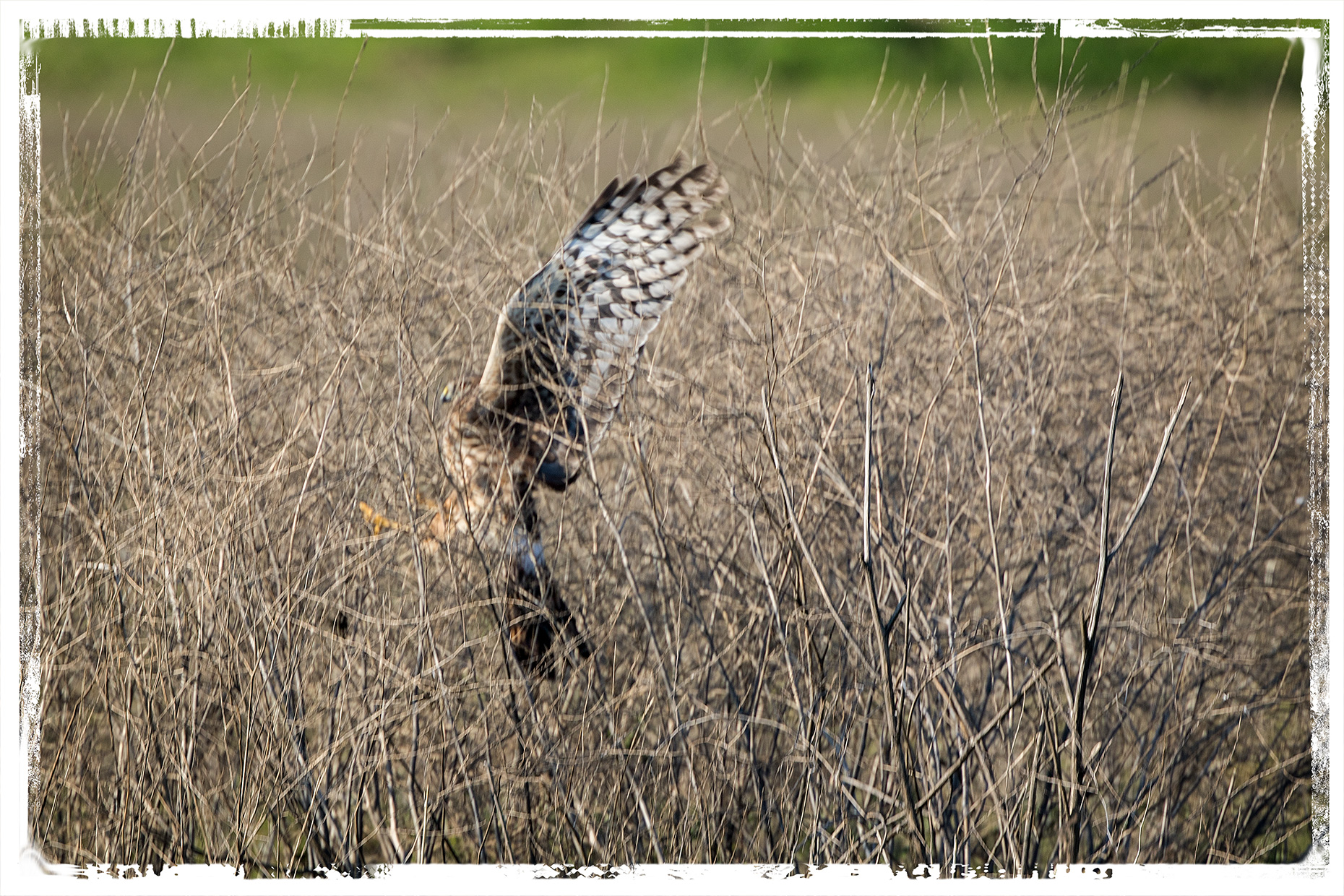
While the ultimate shot is of the hawk actually catching a prey, this didn’t happen in the fifteen minutes we sat taking pictures; everyone of them left empty-clawed.
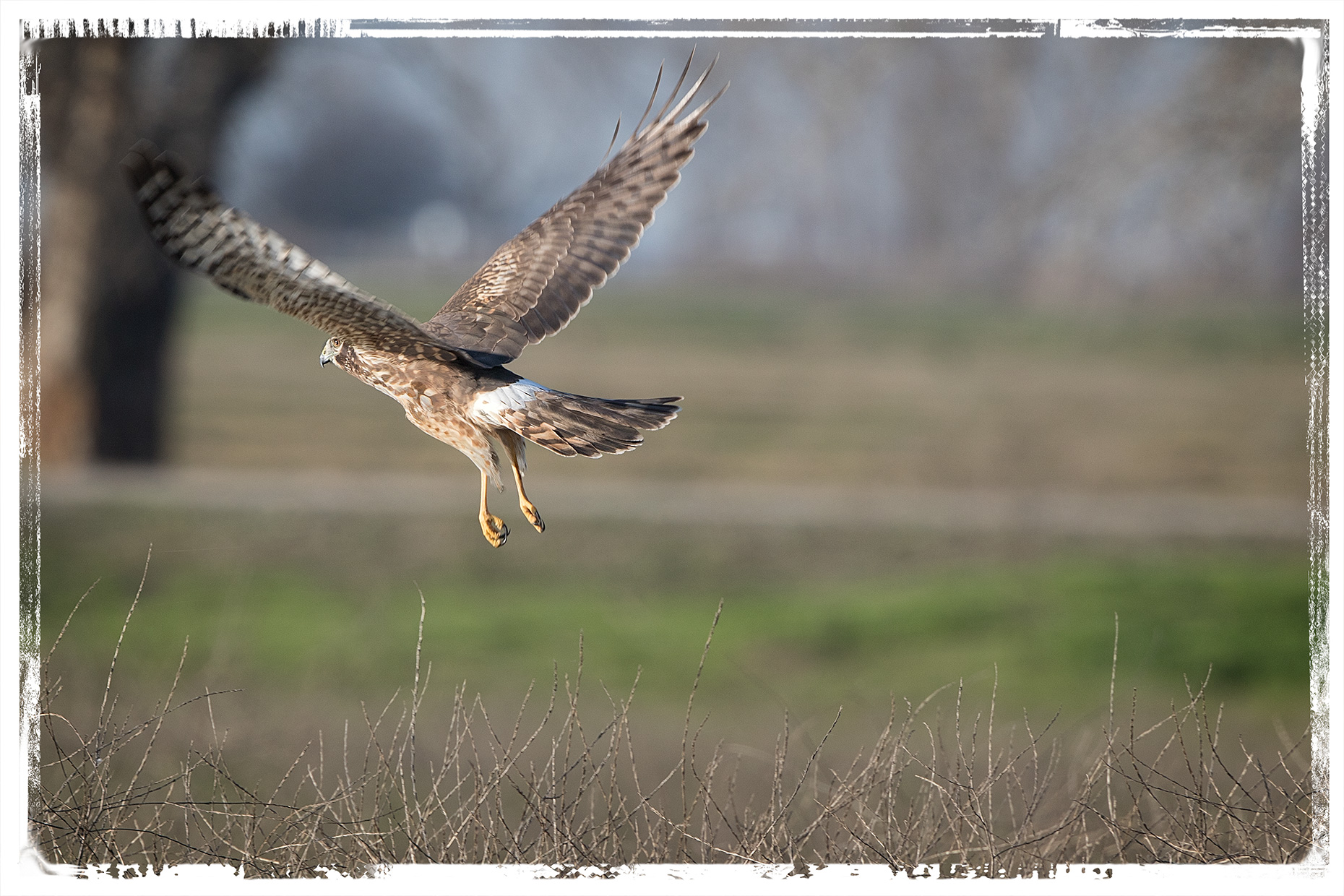
With the considerable number of rabbits and ground squirrels nearby in much more open areas, both Leslie and I wondered what the heck they were trying to catch. I wondered if these were young hawks who were still mastering their hunting techniques, particularly since I’ve never seen Harriers this close together before. That led me to the Cornell Lab of Ornithology where I discovered that “In winter, Northern Harriers roost in groups on the ground.”
